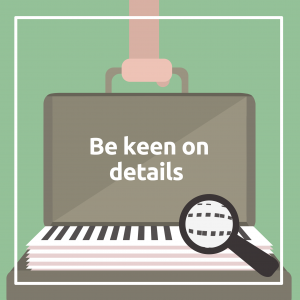

In this age of the internet, distribution and access to information is within the reach of our fingertips. With a click, anyone can share information to a wide audience. With this, and the increasing amount of fake news online, comes the responsibility of being careful on what we spread on social media. To help you identify fake news and prevent their further spread, here are some tips.
1. Check the URL
Where did the news come from? A URL or page name that is not professional sounding, like trendingbalita.info, classifiedtrends.net, orgetrealphilippines.com is the first red flag of a probable fake news. However, there are also fake news sites which have domain names that appear similar with legitimate news websites, like “abcnews .com.co” (imitating abcnews.com) and “theguard1an .com” (imitating theguardian.com). So beware, and look closely on the URL.
2. Read beyond the headline

A shocking headline is common to fake news articles, as they usually cause a reader to click on the link. But headlines and content don’t always match up. Therefore, before reacting or sharing the article, open the link, and read the content before concluding if the information is true or not. Clue: exclamation points on headlines are very, very big red flags.
3. Be keen on details

Factors like syntax, grammar and date of publishing should also be considered. In some cases, a post from years ago can be shared again. This certain post may have been true then but it’s relevance to what is happening in the present can be questionable. Articles with grammatical errors can also be indicators of fake news as it questions the formality and credibility of the source.
4. Know the author, or check the “About” page
If there the author’s name is stated, do a background check on his or her credibility. If there are none, check the “About Us” page of the website it’s posted in. This page states the website’s background and whether it can be trusted or not. However, the absence of both is an indication of fake news, as it suggests that whoever created the content does not want to hold responsibility to the spread of such information.
5. Cross-reference
More often than not, similar stories are also written by other news agencies, especially when the issue is very relevant. Try to do a simple google search on the issue. If there are similar stories from news sites like news.abs-cbn.com,inquirer.net, philstar.com, rappler.com and others, then most probably, the news is true.
6. Analyze if it’s satire
News that seem funny or have this air of mockery towards a serious topic are also rampant these days. Satirical news are meant to poke fun out of news using humor or irony, usually to fuel discussions on issues. Again, you may check the site’s about page, as satirical sites, likeadobochronicles.com usually have disclaimers on their site descriptions.
7. Use fact-checking tools
If you’re still quite doubtful about the article you read online, you can always use tools like fact-checking websites and reverse image search engines. For example, verafiles.org have articles that verify or debunk credibility of facts, whiletineye.com may help you know if the authors just ripped an image from google.
8. Be a skeptic
At the end of the day, a healthy dose of skepticism is always good for people. In this era where a lot of information are fed to us everyday, one should learn which to believe and not. Trust in that gut feeling you have whenever you think like something is wrong with an article, and look for evidences to support it.

